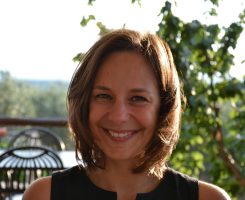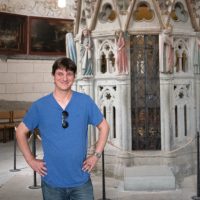CAA News Today
AC2024 Edwards Memorial Support Grant Recipients Announced
posted by CAA — Jan 12, 2024
The CAA Edwards Memorial Support Grants, in memory of Archibald Cason Edwards Sr. and Sarah Stanley Gordon Edwards and made possible by Mary D. Edwards, support women who are emerging scholars and have received their PhD within the past two years or who are nearing the end of a doctoral program. Congratulations to the Annual Conference 2024 recipients, Daniella Berman and Phillippa Pitts!

Daniella Berman, Independent Scholar
Presentation: Revolution as Natural Disaster: Re-Framing 1789
Session: Disaster! Trouble in Eighteenth-Century Art
Presentation Abstract:
In Auguste Desperret’s lithograph, a volcano erupts the word LIBERTÉ. Lava cascades down, threatening to encircle successive cityscapes (representing countries at risk, identified by their flags) and sending figures – many in military uniform – running in the midground. In the foreground, the ruins of a castle bear the date 1789, surrounded by stone fragments inscribed with abandoned values including diving rights and feudalism. The sky is peppered with boulders bearing the words julliet, in reference to the July 1830 revolution.
Produced in 1833 for the satirical publication La Caricature, Desperret’s print Troisième eruption du volcan de 1789, reframes the impacts of the French Revolution as a natural disaster. In so doing, it draws on tropes prevalent in eighteenth-century dialogues inspired by Voltaire among others, that positioned the Revolution as a rupture, oftentimes violent, akin to natural phenomena. However, Desperret’s print calls into question how these natural disaster metaphors for the French Revolution and the St. Dominque revolt were utilized and transformed as the event was repeatedly reframed in the years following 1789 and well into the nineteenth century. What was the function of such analogies, and how were they visualized? This paper will explore the manifestations of Revolution as natural disaster across the material culture of the long eighteenth century, tracing the shifting dialogues that positioned the Revolution as a rupture or cyclical, as progress or failure, as upheaval or disruption, while considering the legacies of this rhetoric in the historiography of the Revolution and related visual material.
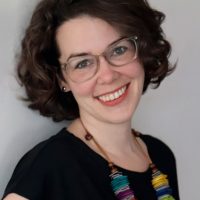
Phillippa Pitts, Boston University
Presentation: Fever Trees & Pharmacopeic Dreams: The Medical Manifest Destiny within Frederic Edwin Church’s Heart of the Andes
Session: U.S. Imperialism, Extraction, and Ecocritical Art Histories
Presentation Abstract:
Although often overlooked, the pursuit of health was central to the nineteenth-century ideas of empire that shaped both U.S. Americans’ imagined sphere of influence and the period’s enthusiasm for grand landscape painting. As the source of lifesaving cinchona, quinine, and diverse Peruvian elixirs, the Andes loomed particularly large in the antebellum imagination. Plays, panoramas, popular scientific texts, and patent medicine ads all cultivated popular interest in this supposed Edenic garden of health and abundance under perpetual threat of spectacular destruction by earthquakes and volcanoes. Taking Frederic Edwin Church’s The Heart of the Andes as its central case study, this paper recreates the conditions of vision in the antebellum city to reveal the underexamined pharmacopeic narratives within the painting and its dramatic performance. In doing so, it highlights how such displays of biodiverse abundance concealed the actual violence of botanical extraction. Indigenous and African laborers were, as one period observer noted, “made human sacrifices to furnish health to the white foreigners,” dying of disease as they carried the lifesaving treatments that would safeguard European and U.S. American imperial forces across the Global South. Today’s scholarly emphasis on the genocidal colonial excavation of Andean gold and silver has similarly elided the cultural, ecological, and human cost of extracting vegetable resources. Pairing insights from ecocriticism and critical disability studies, this paper argues for the importance of recognizing this medical Manifest Destiny, as well as artists’ role in naturalizing such discourse.
Art Journal / AJO Editorial Board seeks new members!
posted by CAA — Jan 08, 2024
CAA invites nominations and self-nominations for three individuals to serve on the Art Journal / AJO Editorial Board for a four-year term: July 1, 2024–June 30, 2028. Candidates may be artists, art historians, art critics, art educators, curators, or other art professionals; institutional affiliation is not required. Art Journal, published quarterly by CAA, is devoted to twentieth- and twenty-first-century art and visual culture. AJO is an online forum for the visual arts that presents artists’ projects, conversations and interviews, scholarly essays, and other forms of original content. Committed to fostering new intellectual exchanges in the fields of modern and contemporary art, AJO prioritizes material that makes meaningful use of the web and publishes on a rolling basis.
The editorial board advises the Art Journal and AJO editors-in-chief and assists them in identifying authors, articles, artists’ projects, and other content for the journal; performs peer review and recommends peer reviewers; guides the journals’ editorial programs and may propose new initiatives for them; promotes and advocates for both journals; and may support fundraising efforts on their behalf. Members also assist the editors-in-chief to keep abreast of trends and issues in the field by attending and reporting on sessions at the CAA Annual Conference and other academic conferences, symposia, exhibitions, and events.
The Art Journal / AJO Editorial Board meets three times a year, with meetings in the spring and fall plus one at the CAA Annual Conference in February. The fall and spring meetings are currently held remotely. Members are expected to pay travel and lodging expenses to attend the conference in February. Members of all editorial boards volunteer their services to CAA without compensation.
Candidates must be current CAA members in good standing and should not be serving on the editorial board of a competitive journal or on another CAA editorial board or committee. Members may not publish their own work in the journals during the term of service. CAA encourages applications from colleagues who will contribute to the diversity of perspectives on the Art Journal / AJO Editorial Board and who will engage actively with conversations about the discipline’s engagements with differences of culture, religion, nationality, race, gender, sexuality, and access. Nominators should ascertain their nominee’s willingness to serve before submitting a name; self-nominations are also welcome. Please email a letter of interest and a CV as a single PDF to Eugenia Bell, Editorial Director, ebell@collegeart.org.
Deadline: February 5, 2024
AC2024 Annual Artist Interviews Announced: Dawoud Bey and Anne Wilson
posted by CAA — Dec 11, 2023
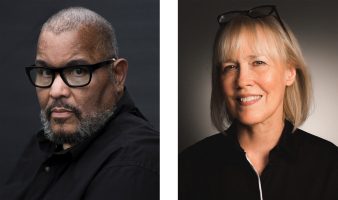
Dawoud Bey (photograph by Frank Ishman) and Anne Wilson (photograph by Joe Mazza)
CAA is thrilled to announce that Chicago-based artists Dawoud Bey and Anne Wilson will be the featured guests of the CAA 112th Annual Conference Annual Artist Interviews. Established in 1997, the Annual Artist Interviews, sponsored by the CAA Services to Artists Committee (SAC), remains the most highly anticipated event at the conference. This year, Bey will be interviewed by Elisabeth Sherman, Senior Curator and Director of Exhibitions and Collections, International Center of Photography, and Wilson will be interviewed by Elissa Auther, Deputy Director of Curatorial Affairs and the William and Mildred Lasdon Chief Curator, Museum of Arts and Design.
Dawoud Bey
Groundbreaking American artist and MacArthur Fellow, Dawoud Bey, is known for his evocative photographs and film works about communities that are often marginalized and for visualizing the oft disappeared histories of the Black presence in America. He began his career as a photographer in 1975 with a series of photographs, Harlem, USA, that was exhibited to critical acclaim in his first one-person exhibition at the Studio Museum in Harlem in 1979. His work has since been the subject of numerous exhibitions and retrospectives, including recently, Dawoud Bey: An American Project and Dawoud Bey and Carrie Mae Weems: In Dialogue, at museums and galleries worldwide, including the Art Institute of Chicago, the High Museum of Art, the National Gallery of Art, San Francisco Museum of Modern Art, the Getty Center, the Seattle Art Museum, the Museum of Fine Arts, Houston, the Walker Art Center, and the Whitney Museum of American Art.
His work has also been the subject of several monographs, including a forty-year retrospective monograph Seeing Deeply (University of Texas Press, 2017) and the recent Street Portraits (MACK Books, 2021). His critical writings on contemporary art and photography have appeared in a range of publications. Most recently, Elegy (Aperture, 2023) accompanies an exhibition at the Virginia Museum of Fine Arts and brings together the history projects and landscape-based work Bey has made since 2012.
Dawoud Bey received his MFA from Yale University School of Art and is currently Professor of Photography and a former Distinguished College Artist at Columbia College Chicago, where he has taught since 1998. He is represented by Sean Kelly Gallery, Stephen Daiter Gallery, and Rena Bransten Gallery.
Anne Wilson
Anne Wilson is a Chicago-based visual artist who creates sculpture, material drawings, and performances that explore themes of time, loss, and private and social rituals. Wilson’s artwork resides in permanent collections around the world, including the Metropolitan Museum of Art, Art Institute of Chicago, Museum of Contemporary Art, Chicago, Des Moines Art Center, Detroit Institute of Arts, Victoria & Albert Museum, London, Foundation Toms Pauli, Lausanne, Switzerland, and the 21st Century Museum of Contemporary Art, Kanazawa, Japan. Wilson was named a 2015 United States Artists Distinguished Fellow and is the recipient of awards from the Renwick Alliance, Textile Society of America, the Driehaus Foundation, Artadia, the Louis Comfort Tiffany Foundation, National Association of Schools of Art and Design, Cranbrook Academy of Art, the National Endowment for the Arts, and the Illinois Arts Council. She is represented by the Rhona Hoffman Gallery and Paul Kotula Projects. Wilson is a Professor Emeritus in the Department of Fiber and Material Studies at the School of the Art Institute of Chicago where she advises graduate students. Her upcoming project opens at the Museum of Arts and Design, NYC in 2024.
The AC2024 Annual Artist Interviews will be held on Friday, February 16, 4:30–7:00 p.m. CT at the Hilton Chicago. This event will also be livestreamed on YouTube.
Register now for the CAA 112th Annual Conference, February 14–17, 2024 in Chicago!
CWA Picks: Winter 2023/2024
posted by CAA — Dec 08, 2023
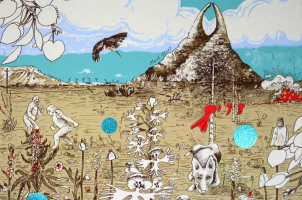
Diane O’Leary (Comanche), Watching the Weather, 1973, gouache on artist’s board, Great Plains Art Museum
The exhibitions selected for the CWA Winter Picks address issues of visibilities and invisibilities, particularly concerning artists coming from communities that have historically been marginalized for reasons that include race, ethnicity, region, religion, sexual identity, and gender. Works on view in the exhibitions on this list collectively evince a diverse set of creative practices, making visible the dynamic cultural production of groups that are often overlooked in art histories past and present. Artists represented include makers of previous eras whose works have been elided in accounts of their time periods as well as contemporary practitioners whose works grapple with continuing invisibilities—in the art world and beyond. The set of exhibitions on this Picks list underscore the critical importance of these artists and their works, insisting on their visibility.
Exhibitions have been organized by the regions where the hosting venues are located. These regions are by no means meant to be comprehensive and reflect Picks submissions by CWA members and colleagues. We are always looking to broaden the scope of these seasonal lists–please consider submitting exhibitions, lectures, grants, residencies, and other events and opportunities to future lists!
United States
Impressive: Antoinette Bouzonnet-Stella
October 21, 2023–October 20, 2024
National Museum of Women in the Arts, Washington, D.C.
Antoinette Bouzonnet-Stella’s ambitious series of 25 prints, The Entrance of the Emperor Sigismond into Mantua (engraved 1675; published 1787), reproduces an Italian Renaissance stucco frieze designed by Giulio Romano (1499 to 1546) for the Palazzo Te in Mantua. This exhibition examines the context in which Bouzonnet-Stella (1641 to 1676) created these engravings, commissioned by Jean-Baptiste Colbert, advisor to King Louis XIV. Her work at the French court was part of Colbert’s plan as vice-protecteur of the Royal Academy of Painting and Sculpture to promote a “French style,” based in classical art. Exquisitely executed, the engravings by Bouzonnet-Stella demonstrate how the power of classical art was borrowed from antiquity, employed in 16th-century Italy, and sought by the 17th-century French court
October 21, 2023–January 28, 2024
SFMOMA, San Francisco, CA
The first retrospective of Pacita Abad features more than 40 works. Over a 32-year career, the prolific artist made a vast number of artworks that traverse a diversity of subjects—from colorful masks to intricately constructed underwater scenes to abstract compositions—revealing visual, material, and conceptual concerns that still resonate today. Abad’s embrace of quilting and other kinds of needlework confounded critics, who dismissed her works as naïve, childlike, and ethnic. In fact, Abad’s multifaceted practice articulated a powerful material politics, reflecting her vision of a nonhierarchical world. This exhibition celebrates Abad’s bold self-determination, commitment to social justice, and radical artistic experimentation.
Colonial Colonnade by Doris Bittar
November 9, 2023–June 1, 2024
Arab American National Museum, Dearborn, MI
Pattern, repetition, and text are the foundation for Doris Bittar’s installation and other works in her first solo exhibition at the Arab American National Museum. Living in San Diego, Bittar draws inspiration from the Arab, Indigenous, and Latinx communities there. Colonial Colonnade is a visual, textual, aural, architectural, and cognitively rich space for interdisciplinary explorations of the Arabic language. In this site-specific installation, Bittar explores how colonization has affected language, among other aspects of culture, while creating a space for reflection and free movement.
Marta Minujín: Arte! Arte! Arte!
November 17, 2023–March 31, 2024
The Jewish Museum, NYC
Marta Minujín: Arte! Arte! Arte! Is the first survey exhibition in the United States of Marta Minujín, a defining force of Latin American art whose trajectory intersected with the major artistic developments of the postwar period. Arte! Arte! Arte! includes nearly 100 works organized to reflect Minujín’s bold experimentation over six decades, charting Minujín’s influential career in Buenos Aires, Paris, New York, and Washington, DC. Works include her pioneering, mattress-based soft sculptures; fluorescent large-scale paintings; psychedelic drawings and performances; and vintage film footage. Ephemeral works—happenings, participatory installations, and monumental public art—are presented through rarely seen photographs, video, and other documentation.
January 27–March 16, 2024
The Galleries at Moore College of Art and Design, Philadelphia, PA
(Re)FOCUS: Then and Now is an exhibition in two parts that aims to celebrate a historically significant 1974 feminist show that was called FOCUS by 1) bringing artworks created by the original 81 participating artists together in one space and 2) presenting new & recent work/s by Philadelphia-based artists who are exploring ideas of gender identity, representation, marginalization, social justice, violence, equality, and empowerment in their contemporary studio practices.
Taking Space: Contemporary Women Artists and the Politics of Scale
September 15, 2023–January 7, 2024
Montclair Art Museum, Montclair, NJ
Taking Space: Contemporary Women Artists and the Politics of Scale invites viewers to consider how space, size, scale, and repetition can be interpreted as political gestures in the practices of many women artists. Inspired by a 2021 exhibition at the Pennsylvania Academy of the Fine Arts (PAFA), Taking Space features 10 works from that original show alongside 13 works from the collection of the Montclair Art Museum. Together these works reveal the varied approaches of women artists for whom space is a critical feature of their work.
October 12, 2023–January 14, 2024
New Museum, NYC
Judy Chicago: Herstory spans Judy Chicago’s sixty-year career to encompass the full breadth of the artist’s contributions across painting, sculpture, installation, drawing, textiles, photography, stained glass, needlework, and printmaking. Expanding the boundaries of a traditional museum survey, the exhibition places six decades of Chicago’s work in dialogue with work by other women across centuries in a unique Fourth Floor installation. Entitled The City of Ladies, this exhibition-within-the-exhibition features artworks and archival materials from over eighty artists, writers, and thinkers.
Fruits of Labor– Reframing Motherhood and Artmaking
November 3–December 23, 2023
apexart, NYC
Fruits of Labor– Reframing Motherhood and Artmaking brings together women artists unpacking the vastly personal yet universal experience of mothering. Encompassing painting, sculpture, video, installation, photography and text-based work, the exhibition evokes motherhood thematically, but also explores the countless tangential ways in which this subject appears in artists’ practice, as a mode of work and being. The artists ultimately make a compelling argument: it is not motherhood that is in conflict with artmaking but the prevailing narratives defining both caregiving and artistic expression.
Making Her Mark: A History of Women Artists in Europe, 1400-1800
October 1, 2023–January 7, 2024
Baltimore Museum of Art, Baltimore, MD
Making Her Mark: A History of Women Artists in Europe, 1400-1800 aims to correct the broadly held but mistaken belief that women artists in Europe were rare and less talented than their male counterparts. With over 200 works, from royal portraits and devotional sculptures to embroidered objects, tapestries, costumes, wax sculptures, metalwork, ceramics, graphic arts, furniture, and more, Making Her Mark features objects from the 15th to 18th centuries that reflect the multifaceted and often overlooked ways that women contributed to the visual arts of Europe.
May 27, 2023–January 1, 2024
National Museum of the American Indian, Bowling Green, NY
Shelley Niro: 500 Year Itch is the first major retrospective of Shelley Niro’s paintings, photographs, mixed-media works, and films. Accessible, humorous, and peppered with references to popular culture, Niro’s art delves into the timeless cultural knowledge and generational histories of her Six Nations Kanyen’kehá:ka (Mohawk) community; addresses stereotypes associated with Native people, particularly women; and ultimately provides purpose and healing.
Raven Halfmoon: Flags of Our Mothers
June 25, 2023–January 7, 2024
The Aldrich Contemporary Art Museum, Ridgefield, CT
Working mainly in portraiture, Caddo Nation painter and sculptor Raven Halfmoon fuses Caddo pottery traditions (a history of making mostly done by women) with populist gestures—often tagging her work (a reference to Caddo tattooing). Her palette is specific and matches both the clay bodies she selects and the glazes she fires with—reds (after the Oklahoma soil and the blood of murdered Indigenous women), blacks (referencing the natural clay native to the Red River), and creams. Her works reference stories of the Caddo Nation, specifically her feminist lineage and the power of its complexities.
No Rest: The Epidemic of Stolen Indigenous Women, Girls, and 2Spirits
January 12, 2023–Extended through 2024
Mitchell Museum of the American Indian, Evanston, IL
The exhibition features 35 original works from 12 collaborating Indigenous artists and draws attention to the crimes perpetrated against Native women and two-spirit individuals in the United States. Rather than present the impacted individuals and communities as statistics, the Mitchell Museum employs an interdisciplinary approach that includes visual stories, interactive content, educational programming, community events, and an awareness campaign to humanize and honor the lives of Indigenous women and two-spirit individuals.
From Paintbrushes to Camera Lenses: Creative Women of the Great Plains, Part II
July 25–December 16, 2023
Great Plains Art Museum, Lincoln, NE
In fall 2018, the Great Plains Art Museum mounted From Paintbrushes to Camera Lenses: Creative Women of the Great Plains, an exhibition that highlighted exceptional work created by female artists from the museum’s permanent collection. To complement other female-focused exhibitions on view during fall 2023 (see below), the museum is organizing part two of this exhibition to showcase many recent acquisitions and other works from the collection by women that were not shown in the first installation.
Supporting Indigenous Sisters: An International Print Exchange
July 25–December 16, 2023
Great Plains Art Museum, Lincoln, NE
Supporting Indigenous Sisters is a print portfolio exchange involving sixteen artists from both Indigenous and non-Indigenous backgrounds. The portfolio was created to help begin conversations on many levels about missing and murdered Indigenous women. Each artist was asked to reach into their own experiences as a female walking this earth. The images from all of the artists advocate for change and for voicing this dark present history.
Threads & Trails: Contemplations of Our Herstories
July 25–December 16, 2023
Great Plains Art Museum, Lincoln, NE
Threads & Trails: Contemplations of Our Herstories is a collaborative exhibition created by five female-identifying artists who connect their personal histories to the conquest of the American West and Indigenous dispossession.
November 3–December 23, 2023
DOCUMENT, Chicago, IL
Natani Notah is a Diné (Navajo) interdisciplinary artist whose practice explores contemporary Native American existence through the lens of Indigenous Feminism. In Thoughts on Being Thrown, Notah connects maps, bodies, and objects to reflect on the larger social issues that repeatedly intersect the lives of women and men alike.
Form, Growth, and Variation: The Experimental Prints of Helen Phillips
November 16, 2023–February 24, 2024
Wright Museum of Art, Beloit College, Beloit, WI
California-born sculptress Helen Phillips found printmaking in the 1930s at Stanley William Hayter’s Atelier 17 in Paris. Though she remained primarily a sculptor, this exhibition chronicles her body of intaglio work—and it is the first solo exhibition of Phillips’s work in the US. From her early, transformative years in Paris, through her move to New York in 1940—when she became a mother—and back to Paris in the 1950s where she produced daring work in color, the prints showcase the artist’s constant affinity to three dimensions, growth in printmaking, and experimentation in line and color.
Nancy Baker Cahill: Through Lines
October 28, 2023–May 19, 2024
Georgia Museum of Art at the University of Georgia, Athens, GA
This solo exhibition highlights the artist’s interdisciplinary artistic practice and the role of emerging technologies in contemporary art. This mid-career survey exhibition is Baker Cahill’s first solo museum show. Expanding upon her background in traditional media, the artist redefines the possibilities of drawing in contemporary art by using augmented reality to transform her graphite-on-paper drawings into immersive environments.
Public Works: Art by Elizabeth Olds
February 3–July 14, 2024
Harry Ransom Center, University of Texas at Austin, Austin, TX
Elizabeth Olds portrayed Depression-era conditions in the United States and was part of a group that promoted the affordability and accessibility of silkscreen printing. This first critically-engaged solo exhibition of her work considers Olds’s lifelong advocacy—from her depictions of labor conditions in the US mining and meatpacking industries, to her satirical social commentary, to her illustrated books for children.
Jen Everett: Could you dim the lights?
February 1–October 5, 2024
Krannert Art Museum, University of Illinois, Champaign, IL
Artist and educator Jen Everett remixes images of herself in conversation with materials she collects to talk about Black life, kinship, and collective gathering. Could you dim the lights? at Krannert Art Museum is her first solo museum presentation. Revisiting childhood photographs, Everett deeply engages rupture—upheaval too familiar in Black life—and recognizes the private, intimate aspects of vernacular images, creatively negotiating ways to maintain their insistent, quiet power. The show is comprised of photographs, moving images, and sound. Inspired partly by her 2022 residency on Fire Island, the exhibition surfaces Black lesbians and queer presence in Black vernacular archives.
Sketch: Contemporary Artists in Conversation with Emily Grace Hanks
October 25–December 6, 2023
Doris Ulmann Galleries at Berea College, Berea, KY
In the summer of 2023, Sara Olshansky and Esther Sitver partook in a residency at the Doris Ulmann Galleries during which they studied the work and personal papers of Emily Grace Hanks (American, 1886-1962) housed in the Berea College Art Collection—and then created a series of artworks in response to what they found. Seeking to “activate” Hanks’ historical artworks for a contemporary, largely undergraduate audience, this exhibition explores the connections that can be made between artists across time and raises questions about what it means to leave an artistic “legacy.” What can we find when we look to the past? What can an archive reveal… and what does it leave obscured? And how can we fill in the gaps?
Deborah Butterfield: P.S. These are not horses
October 1, 2023–June 24, 2024
Jan Shrem and Maria Manetti Shrem Museum of Art at University of California, Davis, CA
For more than 50 years, Deborah Butterfield has explored the horse—both its form and presence. And yet, P.S. These are not horses encourages viewers to understand her sculpture as more than representations of the equine world. Taken from the closing line of a poem by Butterfield’s mentor, William T. Wiley, the title emphasizes the sculptor’s commitment to abstraction and her profound investment in material experimentation. The exhibition surveys Butterfield’s career from her most recent wildfire sculptures to rare early works including ceramics made while studying at UC Davis.
Shiva Ahmadi: Strands of Resilience
January 28–May 6, 2024
Jan Shrem and Maria Manetti Shrem Museum of Art at University of California, Davis, CA
Shiva Ahmadi uses painting as a form of storytelling, combining luminous colors and mystical beings with violent imagery to draw attention to global issues of migration, war, and brutality against marginalized peoples. Ahmadi’s first solo museum exhibition on the West Coast of new works continues her exploration of alternate worlds where women have agency beyond the binary of the beautiful victim or ugly villain. Through her experimentation with the medium of watercolor, Ahmadi probes what lies hidden beneath the surface of the stories we are told, from ancient myths and childhood memories to the modern news cycle.
Samia Halaby: Centers of Energy
February 10–June 9, 2024
Sidney and Louis Eskenazi Museum of Art, Indiana University, Bloomington, IN
Samia Halaby is a pioneer in twentieth-century abstraction and computer-generated art. Born in Jerusalem, Halaby trained as a painter, earning an MFA at Indiana University, where she joined the faculty before becoming the first woman associate professor at the Yale School of Art. This exhibition is her first American survey, featuring more than forty paintings, prints, drawings, and computer-generated works of art from across six decades. The exhibition presents a chronological development of her artistic approach to abstraction, examining formal and thematic relationships across bodies of work.
Yvette Molina: A Promise to the Leaves
October 21, 2023–September 7, 2025
Frances Young Tang Teaching Museum and Art Gallery at Skidmore College, Saratoga Springs, NY
Yvette Molina: A Promise to the Leaves transforms the mezzanine into a museum community space with new art and designs in a site-specific and evolving installation centered around the four elements—earth, air, water, fire—and a fifth constituent, the cosmos. Molina encourages us to consider care as entangled within circles of life—care for one another, whether human or non-human, is care for ourselves and for all. Throughout the exhibition’s two years, Molina is inviting other artists to present their work in the space, regularly re-energizing the installation’s balance between comfort and provocation.
Mary Bauermeister: Fuck the System
November 11, 2023–January 20, 2024
Michael Rosenfeld Gallery, NYC
Mary Bauermeister: Fuck the System is a memorial exhibition and the first solo show to open since the artist’s death in March 2023. It surveys the diverse, interdisciplinary oeuvre of Bauermeister’s seven-decade career. A child of totalitarian Germany who rejected the Constructivist mandates of the country’s postwar schools of art and design, Bauermeister’s art and worldview were always explicitly anti-tradition. Taking its title from a significant assemblage piece, Fuck the System features works from each of her major series. The artist’s fascination with paradox and its potential to reveal fissures in the foundations of entrenched conventions is apparent throughout her work, which both embodies and challenges contradictory binaries.
Ubuhle Women: Beadwork and the Art of Independence
October 4, 2023–January 11, 2024
Godwin-Ternbach Museum at Queens College, CUNY, Flushing, NY
Godwin-Ternbach Museum is pleased to announce Ubuhle Women: Beadwork and the Art of Independence, a spectacular overview of a new form of bead art, the ndwango (“cloth”), developed by by women with a shared vision working together in KwaZulu-Natal, South Africa. The plain black fabric that serves as a foundation for the Ubuhle women’s exquisite beadwork is reminiscent of the Xhosa headscarves and skirts that many of them wore growing up. By stretching this textile like a canvas, the artists use colored Czech glass beads to transform the flat cloth into a contemporary art form of remarkable visual depth. Using skills handed down through generations and working in their own unique style “directly from the soul” (in the words of artist Ntombephi Ntobela), the women create abstract as well as figurative subjects for their ndwangos.
Out of Bounds: Japanese Women Artists in Fluxus
October 13, 2023—January 21, 2024
Japan Society Gallery, New York
This exhibition will be the first to fully explore the essential role of Japanese women in Fluxus, a movement instigated in the 1960s that helped contemporary artists define new modes of artistic expression. Near the 60th anniversary of the movement’s founding, this exhibition highlights the contributions of four pioneering Japanese artists — Shigeko Kubota (1937–2015), Yoko Ono (1933–), Takako Saito (1929–), and Mieko Shiomi (1938–) — and contextualizes their role within Fluxus and the broader artistic movements of the 1960s and beyond.
The exhibition is organized by Midori Yoshimoto, Guest Curator, and Tiffany Lambert, Curator and Interim Director, Japan Society, with Ayaka Iida, Assistant Curator, Japan Society.
Canada
Being and Belonging: Contemporary Women Artists from the Islamic World and Beyond
July 1, 2023–January 7, 2024
Royal Ontario Museum, Toronto, ON
Being and Belonging: Contemporary Women Artists from the Islamic World and Beyond is a bold exhibition exploring the defining issues of our time from the perspective of 25 women artists from or connected to the broader Islamic world spanning across West Africa to Southeast Asia or living in diaspora. Deftly interrogating themes of identity, power, sexuality, and home, this exhibition resists simple stereotypes with outstanding artworks from both emerging and well-established artists.
Swapnaa Tamhane: No Surface is Neutral
September 23–November 26, 2023
Surrey Art Gallery, Surrey, BC
Swapnaa Tamhane’s work challenges the colonial hierarchical separation between art, craft, and design in India. Her artworks include sweeping textile installations where space is transformed by fabric, colour, and light, and works on handmade paper.
Diaspora Dialogues: Archiving the Familiar
October 4, 2023–December 2, 2023
Sur Gallery, Toronto, ON
This exhibition establishes an ongoing dialogue with Latin American diaspora women who are working within the Canadian settler-nation-state, using archives as a strategy of inquiry and resistance. Through dialogic meaning-making processes, these artworks highlight how our social, and political situatedness in the world intersects with memory and power. The artworks in Diaspora Dialogues make visible the living political memory of the diaspora through diverse media art languages, manifesting affective approaches to the archive as a site of interpretation, contestation, and negotiation.
Mexico
Coordenadas móviles: Redes de colaboración entre mujeres en la cultura y el arte (1975-1985)
September 30, 2023–January 14, 2024
Museo de Arte Carrillo Gil, Mexico
This exhibition responds to the urgency of developing new methodologies to rethink the history of recent art in Mexico and the place of women in it. The focus is on collaborative networks that built a creative field forged in differences, dialogue, conflict, complicity, vulnerability, rumor, secrecy, silences, frustration, and friendship, particularly between the years 1975 and 1985. Coordenadas móviles gathers research based on conversations with artists and the study of archives and personal and institutional collections in the country. It also includes commissioned pieces that perform contemporary readings of some historical materials.
Poéticas feministas: Ana Victoria Jiménez / Alicia D’Amico
November 30, 2023–February 11, 2024
Museo de Arte Moderno, Mexico
The exhibition puts in dialogue the documentary and artistic work of photographers Victoria Jiménez and Alicia D’Amico, protagonists of the feminist movement in their respective countries—Mexico and Argentina—who, through a look that ranges from the intimate and poetic to the social, incorporated into their photographic work their social commitment with a feminist aesthetic. The exhibition shows the scope and contacts between Latin American women’s movements, while at the same time situating the trajectory of these two artists in the context of Latin American art.
Europe + The UK
September 16, 2023–January 18, 2024
CO Berlin, Berlin, Germany
Since the 1960s, the US documentarian and portraitist Mary Ellen Mark has advocated for people on the fringes of society. This show features five iconic projects created by the photographer in the 1970s and 1980s. Ward 81 collects her documentation of women in a state mental institution in Oregon, Falkland Road is a reportage on sex workers in Mumbai, Mother Teresa’s Missions of Charity is an eponymous exploration both of the woman and her mission, Indian Circus reproduces a series depicting traveling circus families, and Mark’s award-winning Streetwise project and subsequent Tiny: Streetwise Revisited show her ongoing commitment to telling the story of Erin Charles.
Women In Revolt! Art and Activism in the UK 1970-1990
November 8, 2023–April 7, 2024
Tate Britain, London, UK
This exhibition is the first of its kind – a major survey of feminist art by over 100 women artists working in the UK between 1970 and 1990. It explores how networks of women used radical ideas and rebellious methods to make an invaluable contribution to British culture. Through their creative practices, women’s liberation was forged against the backdrop of extreme social, economic and political change.
September 20, 2023–January 22, 2024
Pinault Collection, Paris, France
This exhibition at the Pinault Collection in France features works on rice paper made by noted feminist artist Mira Schor in the second half of the 1970s, along with a recent painting made in 2022. With a fragile, solitary presence, masks and dresses are covered with highly personal, handwritten texts about the artist’s dreams and her interpretations of them, along with reflections on the Holocaust, to which she lost some of her family, and political writings. “In these works on paper, all that remains of the body are traces of its active, thoughtful character: writing,” notes Schor, “which thus complicates women’s legibility.”
MIDDLE EAST
Afra Al Dhaheri – Give Your Weight to the Ground
November 14, 2023–January 5, 2024
Green Art Gallery, Dubai
This solo exhibition of Afra Al Dhaheri’s work focuses on the concept of grounding: slowing down and observing; becoming conscious of our surroundings; and absorbing and processing. The exhibition is the accumulation of material language developed over time through practice and inquiry. It is layered with the artist’s research into the relation between materiality and the body (a tangible construct), as well as with labour, time, inherited ideologies, and the study of inhabited spaces (intangible constructs).
Roshanak Aminelahi: Faces of Resilience
November 14, 2023–January 2, 2024
Ayyam Gallery, Dubai
In this solo show, Iranian artist Roshanak Aminelahi illuminates diverse stories of women who navigated a male-dominated society and persevered through adversity. Using pointillism and color-blocking techniques, Roshanak captures the distinctive features of these remarkable women. Despite the faceless portrayal, the women are still identifiable, and the portraits symbolize feminine energy and stand as a testament to societal advancement forged through years of resilience and fight for equality by women worldwide.
Meet the 2024 CAA-Getty International Program Participants
posted by CAA — Nov 29, 2023
CAA is pleased to announce this year’s participants in the CAA-Getty International Program. Now in its thirteenth year, this international program, supported by the Getty Foundation, welcomes twelve new participants and four alumni to attend the 2024 Annual Conference in Chicago, IL. The goal of the CAA-Getty International Program is to increase international participation in CAA’s activities and the field of visual arts in academia, thereby expanding international networks and the exchange of ideas both during and after the conference. We look forward to welcoming this year’s participants!
At a preconference colloquium, the new participants will discuss key issues in the international study of art history together with CAA-Getty alumni and US hosts. The program will delve into topics such as postcolonial and Eurocentric legacies, decolonization of museums, scholarship and pedagogy, interdisciplinary and transnational methodologies, and the intersection of politics and art history. Learn more about the first ten years of the program in our online publication.
Program participants—art historians, curators, and artists—hail from multiple countries, expanding CAA’s international membership and contributing to an increasingly diverse community of scholars and ideas. Selected by a jury of CAA members from a highly competitive group of applicants, each participant will receive funding for travel, hotel accommodation, conference registration, CAA membership, and a per diem.
Alumni invited back to the 2024 conference will present at the Art, Authenticity, Migration, and Global Climate Change session while also connecting our new participants to our burgeoning group of nearly 160 CAA-Getty International Program alumni.
2024 PARTICIPANTS IN THE CAA-GETTY INTERNATIONAL PROGRAM

Mariela Cantú is a researcher, audiovisual preservationist, artist, and curator. She is a PhD candidate in Art History at the University of San Martín (CIAP-UNSAM CONICET) and holds a master’s degree in Preservation and Presentation of the Moving Image (University of Amsterdam). She is a member of RAPA—Argentinian Network of Audiovisual Preservationists, and the creator of Arca VIDEO, a collaborative archive of Argentinian video art. She has undergone specific training on video preservation at Associação Cultural Videobrasil (Brazil), La Camera Ottica (Italy), Media Burn Archive and Video Data Bank (USA), and Cinemateca Boliviana (Bolivia), while also attending the Film Preservation and Restoration School Latin America (CINAIN, Cineteca de Bologna, L’Immagine Ritrovatta and FIAF). She has been a professor at Universidad de Buenos Aires, Universidad del Cine, Universidad Nacional del Arte, and Universidad Nacional de La Plata, among others.
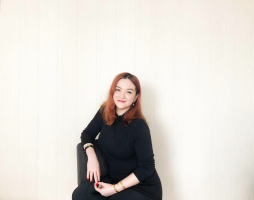
Kathleen Ditzig is a curator at National Gallery Singapore. She received a PhD from Nanyang Technological University in 2023 with a dissertation titled “Exhibiting Southeast Asia in the Cultural Cold War: Geopolitics of Regional Art Exhibitions (1940s–1980s).” She obtained an MA from the Center for Curatorial Studies, Bard College, in 2015. Inspired by her experience in cultural policy, Ditzig studies modern and contemporary Southeast Asian art in relation to global histories of capitalism, technology, and international relations. As a curator and researcher, she is invested in advancing and interrogating art as an exceptional site and system of speaking to power. She won an IMPART Curatorial Award in 2021. Her writing has been published by Southeast of Now, Journal of Social Issues in Southeast Asia, Afterall, post: notes on art in a global context, Art Agenda, and Artforum, among others.

Marzouka Hanna Ibrahim Gaied has a bachelor’s degree in Egyptology from El Minya University, Egypt. Their research has focused primarily on the art of Middle Kingdom (about 2000 BCE) in the Beni Hasan al-Shuruq area of Middle Egypt, and they have wide-ranging experience working on many archaeological sites across Egypt. In their current position as Inspector of Antiquities at the Central Department for Seized Antiquities, they are on the front lines of addressing the trade in looted artifacts, which drains Egypt of its cultural resources. Their experiences have provided them with a deep knowledge of excavation techniques, collection management, and a passion for local community engagement.

Paweł Ignaczak graduated in art history at the Adam Mickiewicz University in Poznań, where he earned a PhD for his thesis on etchings of Jean Pierre Norblin de la Gourdaine (1745–1830) in 2013. Between 2003–15 he worked in the Print Room of the National Museum in Poznań and in the print collection of the Polish Library in Paris. From 2015–22 he worked at the Museum of Warsaw. Since 2015, he has been lecturing at the Academy of Fine Arts in Warsaw, and since 2020 he has been vice-dean at the Faculty of Artistic Research and Curatorial Studies. Currently, he’s been conducting research on amateur artistic work in Poland in the second half of the eighteenth and early nineteenth centuries.

Eyitayo Tolulope Ijisakin is an associate professor in the Department of Fine and Applied Arts, Obafemi Awolowo University, Ile-Ife, Nigeria. His doctoral research focuses on printmaking and the developmental history and contributions of printmaking to contemporary Nigerian art. He has written for Critical Arts and African Arts. Dr Ijisakin is a Fellow of the American Council of Learned Society in the African Humanities Program. He was a Postdoctoral Fellow with the Arts of Africa and the Global South, Rhodes University, South Africa (2017–18). He also received the Carnegie Corporation of New York Fellowship for the 63rd Annual Meeting of the African Studies Association (2020). He has served as a reviewer for several international journals. He is listed among the artists whose works engage social change by the Denver Art Museum, in 2022. He is a member of the Society of Nigerian Artists and the Nigerian Field Society.
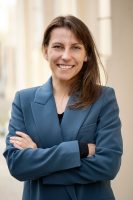
Agnieszka Patala is an assistant professor in the Institute of Art History, University of Wroclaw. The area of her academic focus is medieval art in Europe, with particular reference to panel painting and sculpture—the (multisensorial) relations of artworks with the viewer and space, their use in devotional practices, extra-religious realities of their functioning, including afterlives in the nineteenth totwenty-first centuries. In 2015 she wrote her dissertation on the impact of Nuremberg art and artists on late Gothic panel painting in Silesia. It was published in 2018 and served as a foundation for exhibition, Migrations: Late Gothic Art in Silesia (National Museum in Wroclaw). Currently, she is at work on her postdoctoral project determining the origins, functions, and agency of early altarpieces in Central Europe. She is also a co-investigator in the project, Residua of Premodern Relations with Art in Selected Contemporary Convents in Poland.
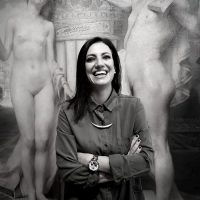
Elena Stylianou researches, writes, and curates at the intersection of the history and theory of photography, modern and contemporary art, critical studies, and museum and curatorial practices. She is currently associate professor at European University Cyprus and president of the International Association of Photography and Theory (IAPT). Her scholarship has been published in peer-reviewed journals and edited volumes, and she is co-editor of Museums and Photography: The Display of Death (Routledge, 2018), Ar(t)chaeology: Intersections of Photography and Archaeology (IAPT Press, 2019), and Contemporary Art in Cyprus: Politics, Identity and Culture Across Borders (Bloomsbury, Spring 2021). She is currently working on a special issue on processes of decolonization and the photographic archive. Elena earned her doctoral degree from Columbia University Teachers College, is a recipient of numerous awards and grants, including a Fulbright and an ArtTable fellowship, and she held a postdoctoral position at UCL, London. She has curated international art exhibitions in Cyprus, and is the lead researcher of several funded projects dealing with arts and heritage.
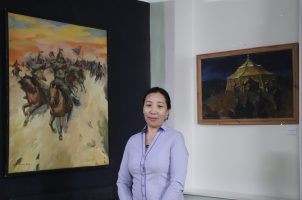
Suvdaa Sampil is a curator at the History and Local Museum of Tuv province, Mongolia, and has been working as a museum curator since 2011. They have written academic articles on cultural heritage research, art history, and interethnic relations that have been published in national and international journals. Moreover, they wrote the books Cultural Heritage of the Central Region and The Settlement of Ethnic Groups in the Tuv Province: Some Cultures and Traditions. After receiving a master’s from the University of Mongolia in 2007, their research concentrated mainly on Mongolian and local cultural heritage and art history. Sampil is in charge of the cultural heritage and collections at the museum and curates permanent temporary exhibitions. In 2016, they were a member of the International Committee for Museums and Collections of Modern Art (CIMAM), an Affiliated Organization of ICOM, and became a member of the International Committee of Museums (ICOM) in 2018.
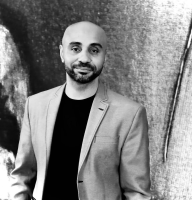
Igor Simões has a PhD in Visual Arts—History, Theory, and Criticism of Art at the Programa de Pós-Graduação em Artes Visuais da Universidade Federal do Rio Grande do Sul (PPGAV-UFRGS) and is the adjunct professor of History, Theory, and Criticism of Art and Methodology and Practice of Art Teaching (UERGS). He was assistant curator of the 12th Mercosur Biennial, member of the curatorial committee of the National Association of Fine Arts Researchers (ANPAP). He works with the links between exhibitions, film editing, art history, and racialization in Brazilian art and the visibility of Black subjects in the visual arts and is the author of the thesis “Film Editing and Exhibition: Black Voices in the White Cube of Brazilian Art.” He is also a member of the curatorial committee of the Museum of Contemporary Art at the University of São Paulo/USP. Curator of the exhibition “Presença Negra no Museu de Arte do Rio Grande do Sul” (2022). He is a member of the curatorial boards of the exhibitions Social Fabric and Enpowerment and a member of the board of AWARE—Archives of Women Artists, Research and Exhibitions and Fractured Times. In 2023 he was general curator of Dos Brasis: Arte e pensamento negro, the most comprehensive exhibition of Black Brazilian artists (Brazil- São Paulo). That same year he was guest curator at the Inhotim Institute for the 2023 season, curating the exhibitions Mestre Didi: The Initiates in Mystery Don’t Die and Doing the Modern, Building the Contemporary: Rubem Valentim and the Right to Form. In 2024, he will co-curate Rosana Paulino: Atlântica e Amefricana at Museo de Arte Latinoamericano de Buenos Aires (MALBA).
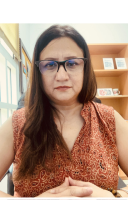
Trained as a studio artist with a major in sculpture, Kanwal Syed earned her PhD in art history from Concordia University as the 2023 Graduate Valedictorian. During her candidacy, she earned the prestigious FQRSC doctoral grant and numerous internal grants, published three journal articles, co-chaired two panels at the annual College Art Association conference, and presented papers at academic conferences in Vancouver, Brighton, Rome, and Chicago. Her dissertation titled “ھم گنہاگار عورتیں (We Sinful Women): Urban Feminist Visuality in Contemporary Art and Feminist Movements in Pakistan After 9/11,” garnered an Honorable Mention in the UC Berkeley South Asia Art & Architecture Dissertation Prize 2023 and has been nominated for NAGS Dissertation Award 2023–24. Before joining American University in Dubai as an Assistant Professor of Art history, she worked as an adjunct faculty at the University of British Columbia and as a part-time faculty at Concordia University. Her research interests encompass non-Western art, decoloniality and cultural feminist visuality in contemporary art.
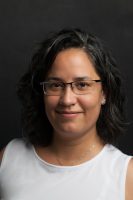
Carolina Vanegas Carrasco researches the processes of creation and reception of nineteenth-century monuments in Latin America. She is the current director of Centro de Estudios Espigas at the Universidad Nacional de San Martín, Argentina, and researcher of the Centro de Investigaciones en Arte y Patrimonio (CONICET-UNSAM). Vanegas is General Coordinator of the Group of Public Art Studies in Latin America based on the Universidad de Buenos Aires. She is the author of Disputas monumentales: escultura y política en el Centenario de la Independencia en Colombia (Bogotá, 1910) (2019, Instituto Distrital de Patrimonio Cultural of Bogotá).
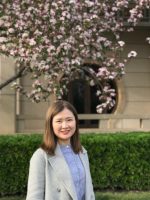
Fanying Zhang, an Assistant Professor in the Department of Arts Administration, Education, and Policy at the China Academy of Art, earned her Ph.D. in Art History in 2021. Her research focuses on unraveling how the Western world shaped its perceptions of Chinese art in the 20th century. She places particular emphasis on analyzing exhibitions, conferences, publications, and the contributions of scholars, artists, and curators to the global dissemination of Chinese art. Zhang’s academic career commenced with a graduate program centered on Osvald Sirén who had already been an accomplished scholar in the study of Trecento painting before getting involved in the study of Chinese art. After that, she expanded her interests in transcultural art history, particularly the role of Chinese art in constructing global art history. She has incorporated this interest into her teaching and is engaged in international collaborations. She is also involved in a project on Professor James Cahill’s archive initiated by the China Academy of Art, further enriching her experience in the field.
PARTICIPATING ALUMNI
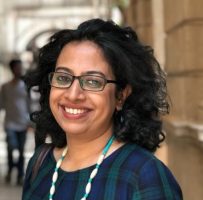
Amrita Gupta is an art historian, writer, administrator, and editor involved in arts education and cultural management. With over two decades in the nonprofit cultural sector in India, she has contributed through art historical research, teaching, published writing, arts programming, and institution building. In 2002, she joined the Mohile Parikh Center (MPC), Mumbai, and became its Program Director in 2005, a responsibility she served till early 2023. In this capacity, she facilitated critical thinking by curating a wide range of innovative art education programs, initiating public art projects, and co-creating short art videos for diverse audiences, and remains associated with the MPC in an honorary capacity. She is Founding Member and Co-director at the Council for Arts and Social Practice (CASP), established in 2013 as a transdisciplinary platform to facilitate critical dialogues on cultural sustainability. Her practice at CASP focuses on the interplay of social history, fieldwork, community-based art, and collective experience. She serves as a jury member for the Arthur Kingsley Porter Prize for Art Bulletin articles and the SAIL Mentorship Program (Edition III) at Sunaparanta Goa Center for the Arts. In 2019, she co-founded and edits the e-journal, Partition Studies Quarterly (PSQ), which focuses on partition narratives of Northeast India, and other less-remembered partition stories in the subcontinent. Her ongoing and independent research focuses on the art practices of Northeast India, and an essay on this topic has been published in the edited book 20th Century Indian Art (Thames & Hudson and Art Alive, 2022). Her art writings for anthologies, journals, exhibition catalogs, and magazines have been published widely in leading print and digital platforms; she has edited art books for children and continues to write on Indian modern and contemporary art.
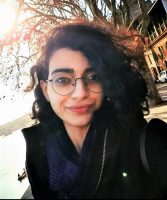
Delaram Hosseinioun received her first MA in literary criticism from the University of Exeter and her second MA in cultural studies from KU Leuven University. In her PhD project at Utrecht University, titled “Unveiling the Other: The Metamorphosis of Voices of Iranian Female Artists from the Mid-Twentieth Century to the Present Day,” Delaram draws from gender theories in poststructuralist psychoanalysis, such as in the works of Butler and Cixous, along with theories regarding self and forms of othering in continental philosophy, namely works of Bakhtin and Derrida. Her goal is to trace the trajectories and endeavors of Iranian female artists in reclaiming their identities. Working along with the artists Delaram explores the artworks as a pictorial form of dialogue and artists’ attempts in surpassing sociocultural restraints. Delaram’s focus rests on the revelation and universality of women’s voices in creative platforms, art journalism and interviewing artists beyond borders.
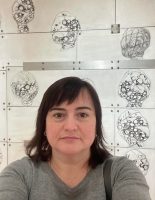
Mariana Levytska is an associate professor in the Department of Graphic Design and Artbooks of the Ukraine Academy of Printing. She works as a part-time senior research associate in the Department of Art Studies of the Ethnology Institute at the national Academy of Ukraine in Lviv. She received her PhD in the history of art from the Lviv National Academy of Arts in 2023. She specializes in Ukrainian art of the long nineteenth century through social art history optics. In 2022 she began a research project focused on artists’ response to the warfare in Ukraine, after the full-scale Russian invasion.
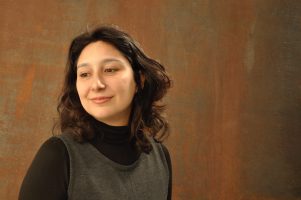
Ana Mannarino is an art historian and professor of Art History at School of Fine Arts at Federal University of Rio de Janeiro (EBA-UFRJ) and at Visual Arts Postgraduate Program at Federal University of Rio de Janeiro (PPGAV-UFRJ). She received her PhD in Art History/Visual Arts at PPGAV-UFRJ and participated in a yearlong collaborative study program at Université Sorbonne Nouvelle-Paris 3. Her doctoral thesis, “Word in Brazilian Art: Mira Schendel and Waltercio Caldas,” focuses on the relationship between text and image in Brazilian contemporary art, especially in the work of these two artists. Her research also considers modern art and historiography of art in Brazil, the connections between art and poetry, Concrete art, and the production of artists’ books.
This program is made possible with support from Getty through its Connecting Art Histories initiative.

Meet the 2024 CAA Annual Conference Kress Travel Grant Recipients
posted by CAA — Nov 28, 2023
Recognizing the value of the exchange of ideas and experience among art historians, the Kress Foundation is offering support for scholars participating as speakers at the 2024 CAA Annual Conference. The scholarly focus of the papers must be European art before 1830.
Samuel H. Kress Foundation CAA Annual Conference Travel Fellows 2024

Michela Degortes, Researcher, University of Lisbon
“Approaching the Portrait Gallery of the Academy of Sciences of Lisbon”
Art Collections of Academies of Sciences
Chair: Viktor Oliver Lorincz
The Academy of Sciences of Lisbon was founded in 1779 under the patronage of Maria I of Braganza, thanks to the effort of enlightened figures of the Portuguese aristocracy, clergy, and scientific elite. A print published the same year in the Jornal Enciclopedico to celebrate the event represents the queen surrounded by a circle of learned courtesans while holding hands with a figure symbolizing Knowledge. A portrait of Maria I located in one of the main rooms of the Academy celebrates her role as a patron.
Painted by the Irish artist Thomas Hickey in 1783, it is part of the gallery of paintings held by the Academy of Sciences of Lisbon, which brings together the portraits of remarkable figures of the eighteenth- and nineteenth-century Portuguese cultural milieu. It includes portraits of other members of the royal family as well as of important members of the institute, such as José Francisco Correia da Serra, Manuel de Cenaculo, and Joseph Mayne, whose cabinet of curiosities constitutes the museum of the Academy. Despite the remarkable quality of many of these artworks and their influence on the Portuguese artistic context, the collection still lacks a deep investigation. This paper focuses on the sitters, the artists involved, and the donations that formed the collection, and gives rise to interesting comparisons to similar art collections held by other academies of science.
Charline Fournier-Petit, PhD candidate, University of Maryland and Lecturer, École du Louvre
“Elisa Bonaparte Baciocchi and Diplomacy: A Gift of Fourteen Portraits,”
Women and Diplomatic Art
Chair: Silvia Tita
Tense, if ever conflicting, were the relationships between Elisa Bonaparte Baciocchi, Grand Duchess of Tuscany, and her brother, the emperor Napoleon I. A clever ruler, she rapidly exploited the marble quarries of Carrara for diplomatic purposes, producing abundant portraits of the great sovereigns of her time. Sculpture also served her as a surrogate for diplomatic dialogue with the emperor to affirm her legitimacy as the sovereign of Tuscany and her daughter’s dynastic succession. In 1809, Elisa Bonaparte Baciocchi gifted a series of fourteen marble portraits depicting members of the Bonaparte family to Napoleon I, including her own bust and that of her daughter, Napoléone-Elisa. Extracted from her own quarries and intended for the busy Galerie de Diane at the Palais des Tuileries, this series in marble was both a political message sent not only to the childless emperor, but also to their siblings and to the court. With this gift, Elisa Bonaparte Baciocchi demonstrated her capability to impose her authority over a conquered province and restore the prestige of Carrara. And, by gathering quickly such a large number of sculptures, she was also displaying the production capacity of her marble quarries. The gift also epitomized her diplomatic strategy and dynastic aspiration, thorugh which Elisa Bonaparte Baciocchi turned her motherhood into a powerful argument supporting her political ambitions.
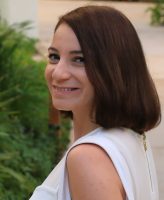
Gohar Grigoryan, , University of Fribourg, Switzerland
“An Illustrated Armenian Law Book and the Ceremonial Mise-en-scène of the King’s Body”
Medieval Ritual Representations: Model of or Model for?
Chairs: Alice Isabella Sullivan and Robert Nelson
A miniature created in 1331 in the Cilician Armenian capital of Sis depicts the young king Lewon IV (r. 1321–1341) at the tense moment of executing—according to the nearby inscription— “just judgment.” The full-page image serves as frontispiece to the oldest extant copy of the Assizes of Antioch—a now-lost Frankish legal code. An important monument of secular law, the Assizes of Antioch was influential beyond the Principality of Antioch and the crusader states, reaching the Armenian Kingdom of Cilicia (1198–1375). Its main purpose was the regulation of the relationship between the suzerain and his vassal lords, and it is exactly these relationships that are represented in the miniature in question, with the king seated on an elevated throne and executing justice over his lords. Initiated by the king himself, the juridical image of Lewon IV was heavily charged with realistic codes, idealizing symbols, and eschatological messages, the intended meanings of which will be tackled in my paper. I will first focus on how the king’s painter, Sargis Pitsak, visualized the ceremonial mise-en-scène around the sovereign’s imposing body and how the latter’s political agenda is reflected in this and other portrayals of him. The discussion continues with questions of visibility and the particular occasions at which the target audience could possibly see an emblematized image like this.
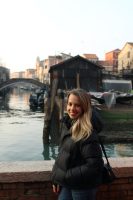
Laura Hutchingame, PhD candidate, University of California Los Angeles
“Red Larch at San Fermo: Ligneous Knowledge in the Upper Adriatic”
Wood: Medium Specificity in the Global Early Modern Period
Chair: Tatiana String
In the late medieval Adriatic, wood was a crucial natural resource and building material that required highly specialized knowledge. From felling alpine trees, preparing logs into rafts, floating rafts downriver, to storing and seasoning timbers, the preparation of lumber involved labor-intensive processes. The “ship-hull ceiling,” in the form of an inverted ship, was an important artifact that proliferated throughout the region from ca. 1300–1450 and was fostered by the collaboration between different wood-based artisans. The ceiling at the church of San Fermo in Verona, executed from ca. 1300–50, offers an exceptional case study. In addition to its innovative design, recent conservation work has uncovered material evidence of how artisans sourced appropriate lumber, prepared timbers, and crafted the ceiling from local red larch. I highlight the specialized ligneous knowledge of artisans who contributed to the production of the ceiling. I show how the ceiling (and wood itself) is a source of interconnections between patrons, artisans, political regimes, and religious orders of this time. At San Fermo, the material and physical qualities of wood are neither representational nor represented but are made visible through crafting.
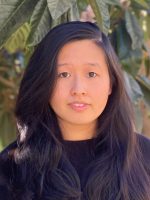

Cynthia Kok, PhD candidate, Yale University, and Stephanie Archangel, Curator, Rijkmuseum
“Edvardt Abraham Akaboa de Moor, a Master Silversmith from Angola”
Center and Periphery?: Mapping a Future for Research in Netherlandish Art
Historians of Netherlandish Art
Chair: Stephanie Dickey
With origins as a “prestige project,” the Rijksmuseum grapples with the legacy of prioritizing upper-class artworks and narratives, leading to criticisms that the institution is a place of and for elites. Decorative arts within the collection, however, were rarely made by the upper classes. We turn to objects and archives to consider these marginalized makers more closely. We take as a case study a gun by Edvardt Abraham Akaboa de Moor. From archival research, we learn that de Moor was a Black man from Angola who likely found his way to the Netherlands via modern-day Ghana. By 1665, however, de Moor worked as a skilled weapons engraver as a member of the silversmith’s guild and lived with his Dutch wife and children in Utrecht. The Rijksmuseum’s flintlock hunting gun is signed “Edvardt Abraham de Moor” and “tot Utrecht,” claiming ownership of the lock, the most technically difficult part of the gun. As with other marginalized figures, little information remains of de Moor—certainly no portraits nor personal archives—yet traces of him and his descendants remain in the state archives and in museums. We ask, How do we recover the identity of individuals who operated and worked in craft workshops? Can a shift in focus to makers and archives allow museums to interrogate the narratives of marginalized peoples? And how can museums conscientiously address the question, to whom does the agency of craftsmanship belong?
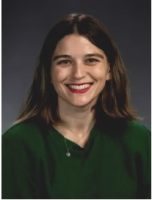 Caroline Delia Koncz, Assistant Professor, Angelo State University
Caroline Delia Koncz, Assistant Professor, Angelo State University
“Lavinia Fontana’s Minerva Unarmed: The Female Nude, as Seen and Painted by Woman”
What Did Women See? Gender and Viewing Experience in Early Modern Italy
Chair: Sabrina De Turk
Created shortly before the artist’s death in 1614, Lavinia Fontana painted a rather curious rendering of the virginal goddess of wisdom for Cardinal Scipione Borghese. Standing in profile, her head tilted speculatively towards the viewer, Minerva holds in her arms a sumptuous dress of luxurious fabrics and gold trim, which she is presumably about to don. Beside her in the room, one can find the deity’s pet owl alongside her previously adorned armor, helmet, and shield, all of which serve to identify the goddess. Such objects were likely necessary to include, since, beyond the subject of the Judgment of Paris, remarkably few Italian artists in the early modern period depicted Minerva unrobed, and even fewer were women. I consider the unique iconography of Fontana’s painting as well as the intended message this work held for its viewers in seventeenth-century Italy. In addition to considering the male owner’s reception of the piece, this talk will more closely study how female beholders of the period might have analyzed the nude Minerva, when fashioned by the hand of a woman painter.
Matthew Sova, PhD candidate, Johns Hopkins University
“Representations of Performance in the Konstanz Holy Sepulcher”
Medieval Ritual Representations: Model of or Model for?
Chairs: Alice Isabella Sullivan and Robert Nelson
Located in Konstanz Cathedral, a thirteenth-century holy sepulcher stands as significant material evidence for widespread medieval practices of architectural copying. Understood as a reconstruction of the Tomb of Christ aedicule in the Church of the Holy Sepulcher in Jerusalem, scholars emphasize the Konstanz holy sepulcher’s reliance on the plans, dimensions, spaces, and structures of its illustrious model. These interpretations often downplay variations in appearance and function between the two microarchitectural objects, as well as regional contexts for these deviations in the Konstanz copy. Specifically, the Konstanz holy sepulcher features an extensive sculptural program of figures from Christmas, Easter, and the early church, which has no precedent in the Jerusalem aedicule. My paper investigates these sculptures, linking them to a local tradition of religious performances undertaken in and around the Konstanz holy sepulcher. Numerous medieval texts from Konstanz describe ritualized Holy Week reenactments in the city’s cathedral, performed by the clergy outside of the Mass. These paraliturgical events emphasized the roles of the three Marys, apostles, and angels, central figures in the Konstanz object’s artistic program. I show that these sculptures not only visualized the scriptural events of Easter, but served as permanent, idealized representations of Holy Week performances. Consequently, I argue that the Konstanz holy sepulcher’s sculptural program both enhanced the function of the copy as a stage for paraliturgical drama, and perpetually reinscribed historical and spiritual connections between its associated medieval community and the site of Christ’s death and resurrection in Jerusalem.
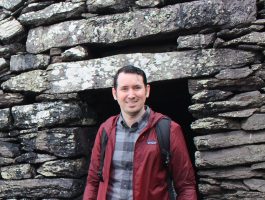 Mark H. Summers, Lecturer, University of Arkansas, Fayetteville
Mark H. Summers, Lecturer, University of Arkansas, Fayetteville
“Ritual Practice as Community Building in the Birds Head Haggadah”
Medieval Ritual Representations: Model of or Model for?
Chairs: Alice Isabella Sullivan and Robert Nelson
The Birds Head Haggadah, dated to around 1300 and produced in the Upper Rhine region of Southern Germany, is one of the earliest extant illuminated Ashkenazic haggadot, or manuscripts, that contain the ritualistic text recited at the Passover Seder. The book is well-known for its unusual approach toward figuration, styling Jewish people as hybrids with human bodies and heads of griffins, featuring the curving beaks of eagles and the pointed ears of lions. Throughout the manuscript, figurative illuminations in this style occupy the margins, enacting the historical events remembered at Passover and performing ritualistic activities associated with celebration of the feast. A pair of openings from the manuscript exemplifies this twofold approach. On folios 24v-25r, a scene from the Exodus unfolds across the lower margins. Though the story here refers to historical events of persecution, the figures that receive loaves of unrisen bread and turn to follow Moses appear in medieval styles of dress. While the story relates the flight from Egypt and pursuit by Egyptian soldiers, here the aggressors are likewise rendered as contemporary figures. As non-Jews, Pharoah and his soldiers appear as fully human figures with blank faces and are outfitted as German knights bearing the black eagle flag of the Holy Roman Empire. On the next opening spanning folios 25v-26r, the marginal program presents a scene of the ritualistic practice of making unleavened matzo, an act of abstinence that makes the historical suffering of the Jewish people tangible for the duration of Passover. The figures animating this scene, which is presented as a contemporary activity rather than a historical narrative, appear visually indistinct from the actors rendered in the previous opening. Here, the Jewish men and women working together to prepare dough, divide portions, and bake bread are all dressed in the same kinds of clothing as the followers of Moses, complete with modest hair coverings for women and the pointed hats worn by adult men that were at times compulsory accessories for men in northern medieval Europe. The approach in the visual program outlined in these openings creates a temporal elision connecting historical events with contemporary ritualistic practices. The result establishes the Passover Seder as what Marc Epstein calls a “metahistorical topos,” or a kind of temporal interconnectivity that links past, present, and future events and practices for the book’s users/viewers. I consider how the representation of ritual in the Birds Head Haggadah engages with metahistorical narratives to build community and identity for its medieval users.
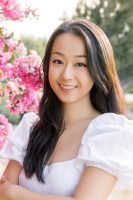 Joyce Zhou, PhD candidate and Teaching Fellow, Yale University
Joyce Zhou, PhD candidate and Teaching Fellow, Yale University
“Playing with Porcelain: Reimagining the Self with the Early Modern Dutch Dollhouse”
Miniature Designs and Worldly Simulations: Questions of Scale in Early Modern Arts
Chair: Wenjie Su
Sometime between 1743 and 1751, a Dutch woman named Sara Rothé assembled two elaborate dollhouses. Rothé describes a porcelain display room in one of her dollhouses, which survives today in the Kunstmuseum in The Hague. The room contains a variety of miniature arts, including miniature porcelain imported by the Dutch East India Company from China and Japan, as well as domestic imitations in ivory and glass. Pioneered by Amalia van Solms, Princess of Orange (1602–1675), this practice of dedicating entire rooms to the collection and display of East Asian porcelain was associated exclusively with female members of the House of Orange. While Rothé did not have the status nor financial means to recreate van Solms’ porcelain display in full-scale, she was able to successfully do so in the intimate realm of her dollhouse.
I explore the intersection of two early modern Dutch female collecting practices: the curation of dollhouses by wealthy Dutch women, and the formation of dedicated porcelain display chambers in Dutch royal circles. Building on the work of Hanneke Grootenboer and Susan Stewart, I argue that early modern Dutch dollhouses facilitated aspirational and imaginative thinking. Rothé’s porcelain room, which encapsulates Dutch royal porcelain chambers on a reduced scale, was a controlled and manipulable space in which Rothé adopted an alternate subjectivity and engaged in imaginative play. Here, Rothé could take on the persona of a Dutch royal, handling the various fruits of global commercial exchange as she engaged in immersive self-fashioning.
CWA Picks: Fall 2023
posted by CAA — Oct 23, 2023
The exhibitions chosen for the Fall CWA Picks collectively highlight the power of art to engage with medium and memory in diverse and thought-provoking ways. Each exhibition showcases artists who engage with the concept of memory, whether by challenging societal norms and values, redefining perfection, or addressing historical and environmental legacies. Together, these exhibitions emphasize the power of art to shape our understanding of the past and how it shapes our present.
September 7–21 November, 2023
HackelBury, London
Medium and Memory is an exhibition featuring conversations between eight diverse artists whose work centers on memory in its various forms. The work in the show aims to challenge the act of forgetting and harness the potential of art to aesthetically transform traumatic historical legacies, including war, famine, genocide, colonialism, deindustrialization, and the memory-altering effects of the digital age.
RE/SISTERS: A Lens on Gender and Ecology
October 5, 2023–January 14, 2024
Barbican Art Gallery, London
RE/SISTERS: A Lens on Gender and Ecology showcases the work of nearly fifty international women and gender nonconforming artists. Through film, photography, and installations, the exhibition delves into the interconnectedness of gender and ecology, advocating for a just and equitable society where both people and the environment are valued and treated fairly.
The Brodsky Center at Rutgers University: Three Decades, 1986–2017
September 13–December 22, 2023
Zimmerli Art Museum, New Brunswick, NJ
In 1986, Rutgers Distinguished Professor Emerita Judith K. Brodsky established the Brodsky Center to provide opportunities for women, gender nonconforming artists, and artists of color who were marginalized in the art world. This center, originally focused on print and papermaking, evolved into a hub of innovation, addressing contemporary concerns such as race, gender, climate, language, and immigration. The exhibition showcases artworks emblematic of the Brodsky Center’s mission to introduce new narratives into American culture and is organized thematically into sections reflecting its impact on art and society.
Alison Croney Moses: The Habits of Reframing
September 1–October 22, 2023
Abigail Ogilvy Gallery, Boston
The Habits of Reframing is a solo exhibition by Boston-based artist Alison Croney Moses, featuring two new series of wooden artworks. These pieces encourage viewers to consider their ability to shape their sense of self and their understanding of the world, while also challenging societal values, celebrating imperfections, and redefining perfection through sensory engagement with the materials and forms used by the artist.
September 16–November 26, 2023
The Renaissance Society at The University of Chicago
In the fall of 2023, the Renaissance Society will host the first solo exhibition of Beirut-based artist Dala Nasser, featuring a site-specific commission designed to fill the Ren’s expansive exhibition space. Nasser’s interdisciplinary approach encompasses painting, performance, and film, with a focus on abstraction and alternative image-making. Her artwork, created by directly engaging with landscapes, offers a unique perspective by highlighting the marks of political and environmental erosion and toxicity, exploring themes of ecological decay, historical narratives, and the consequences of capitalist and colonial practices. The exhibition centers on the Adonis River, where Nasser produced her paintings inside the cave associated with the mythical figure Adonis, utilizing locally sourced materials, and incorporating three-dimensional spatial environments that evoke the Adonis temple and its surroundings.
Yolanda López: Portrait of the Artist
July 7–October 29, 2023
San José Museum of Art
This is the first solo museum presentation of the work of Yolanda López, the pathbreaking Chicana artist and activist whose career in California spanned five decades. The exhibition presents a compendium of López’s work from the 1970s and 1980s, when she created an influential body of paintings, drawings, and collages that investigate and reimagine representations of women within Chicano/a/x culture and society at large.
Yolanda M. López: Women’s Work is Never Done
August 31–November 12, 2023
Thacher Gallery, University of San Francisco
Curated by her archivist, Angelica Rodriguez, and son, Rio Yañez, this body of work reveals López’s inquisitive approach to artistic mediums and the feminist and political sensibilities that emerged in her practice from life experiences, research, and community activism. Artworks include drawings from her youth, protest designs, preparatory studies for her iconic 1978 Guadalupe series, photography, collage, and xerox art from 1980 and 1990s Mission, prints from her Women’s Work is Never Done series, as well as her final reflective works. This body of work reveals López’s inquisitive approach to artistic mediums and the feminist and political sensibilities that emerged in her practice from life experiences, research, and community activism.
Hung Liu: Capp Street Project, 1988
September 16–November 18, 2023
Rena Bransten Gallery, San Francisco
This collection of paintings and artifacts re-imagines the 1988 exhibition Hung Liu: Resident Alien, the culmination of Liu’s two-month artist residency at the Capp Street Project in San Francisco, presented at the downtown Monadnock Building, a sprawling, under-construction office space that offered Hung Liu a liberating and engaging opportunity. The original exhibition, which took place just five years after Liu immigrated to the US from her native China, was instrumental in bringing her work to the attention of the larger art world. The multimedia installation—composed of paintings, wall drawings, Chinese calligraphy, ceremonial objects from Chinatown, a pile of abacuses, and small mounds of fortune cookies—addressed the history and complexities of the immigrant experience, looking specifically at the history of Chinese immigration to San Francisco from the Gold Rush of 1849 to her own immigration to the US in 1984 and her subsequent status as a “resident alien.” This exploration was both a central theme of the 1988 show, and a focus Liu would pursue for the rest of her career.
June 30–December 10, 2023
SFMOMA, San Francisco
Chinese-born artist Hung Liu (1948–2021) created richly layered portraits and installations that interweave memory and history. This exhibition features works from SFMOMA’s collection, from her most significant paintings made in China during the tumult of the Cultural Revolution between 1966–76 to those created in the US during the 1990s and 2000s. Intimate and large-scale works blend landscapes and images from historical and family photographs with dripping brushwork. Together, they reveal Liu’s enduring commitment to “be a witness of my time” as she elevated her subjects to “mythic figures on the grander scale of history painting.”
August 26–November 4, 2023
Catharine Clark Gallery, San Francisco
Born in Mexico and based in California’s Napa Valley, Arleene Correa Valencia creates paintings, textiles, and drawings that reflect on patterns of migration and family separation. Her recent work is inspired by the letters that she wrote to her father as a child, during a period when her father had migrated to the United States while Correa Valencia remained in Mexico. Correa Valencia draws on her family’s archives and correspondence to craft a visual language that considers the politics of visibility and the complexities of undocumented immigration.
Mika Rottenberg: Spaghetti Blockchain
May 18–October 22, 2023
Contemporary Jewish Museum, San Francisco
New York–based Mika Rottenberg (b. 1976, Buenos Aires) employs a disarmingly absurd sense of humor to confront the paradoxes of global capitalism and uncover the surprising ways in which we are all connected. This exhibition presents Rottenberg’s most prominent videos, installations, and sculptures of the past decade in the first museum survey of her work ever to be presented on the West Coast. Explore a collection of vividly colorful video installations and kinetic sculptures that uncover the surreal qualities of mass production and consumption.
Women In Revolt! Art And Activism In The UK 1970-1990
November 8, 2023– April 7, 2024
Tate Britain, London
This exhibition is a major survey of feminist art by over 100 women artists working in the UK. It explores how networks of women used radical ideas and rebellious methods to make an invaluable contribution to British culture. Through their creative practices, women’s liberation was forged against the backdrop of extreme social, economic, and political change.
Women in Revolt! brings together a wide variety of mediums including painting, drawing, sculpture, performance, film, and photography. It explores and reflects on issues and events such as: the British Women’s Liberation movement, the fight for legal changes impacting women, maternal and domestic experiences, punk, and independent music, Greenham Common and the peace movement, the visibility of Black and South Asian Women Artists, Section 28 and the AIDS pandemic.
The show celebrates the work and lived experiences of a hugely diverse group of women. Many who, frequently working outside mainstream art institutions, have largely been left out of artistic narratives. Women in Revolt! presents many of these works for the first time since the 1970s.
The Feminist Art Program (1970–1975): Cycles of Collectivity
September 13, 2023–January 21, 2024
REDCAT, Los Angeles
In 1970, artist Judy Chicago pioneered a feminist model for art and education with her students at Fresno State College. Chicago was invited by Miriam Schapiro to collaboratively expand this program at CalArts in 1971, where they would go on to develop radical and now influential forms of art, pedagogy, and performance. The program began a cycle of collective activity with the contribution of numerous students, faculty, artists, and designers, many of whom are now considered pivotal artists in feminist art history.
This exhibition acknowledges the many generations of women, trans, queer, and non-binary faculty, students, and artists at CalArts who have stewarded these histories through teaching, archiving, and experimenting. Engaging with these initial moments, while also drawing connections with subsequent contributions, The Feminist Art Program (1970–1975): Cycles of Collectivity brings together these histories through its diverse feminisms, gender theories, and transfeminismos. The exhibition gathers materials from institutional and personal archives, joining them with new responsive artworks by CalArts alumni ak jenkins, Andrea Bowers, Gala Porras-Kim, and Suzanne Lacy. The show includes a special presentation of The Performing Archive by Leslie Labowitz Starus and Lacy. The Feminist Art Program (1970–1975): Cycles of Collectivity presents an ever-growing feminist contribution to art and pedagogy with a multiplicity of voices, contexts, and identities, with an intergenerational collective of scholars, artists, activists, and curators contributing to the research, memory, syllabi, and artworks on display.
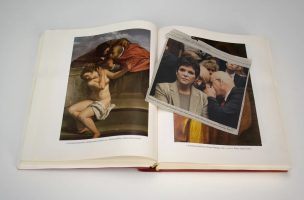
Joanne Leonard, Artemesia’s Suzanna and the Elders and Men Conspiring, 2006
(From Medium & Memory)
Apply now for CAA’s Professional Development Fellowships for graduate students!
posted by CAA — Sep 15, 2023
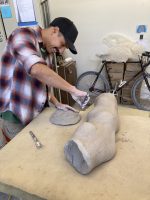
2022 Professional Development Honorable Mention in Visual Art Alberto Lozano Ruvalcaba in the studio
The Professional Development Fellowships program supports promising artists, designers, craftspersons, historians, curators, and critics who are enrolled in MFA, PhD, and other terminal degree programs. Fellows are honored with $10,000 unrestricted grants to help them with various aspects of their work.
One award will be presented to a practitioner—an artist, designer, and/or craftsperson—and one award will be presented to an art, architecture, and/or design historian, curator, or critic. Fellows also receive a free, one-year CAA membership and complimentary registration to the Annual Conference. Honorable mentions, given at the discretion of the jury, also earn a free one-year CAA membership and complimentary conference registration.
ARE YOU ELIGIBLE?
CAA seeks applications from students who are current members; will receive their MFA or PhD degree in the calendar year 2023, following the year of application (2024 for the current fellowship cycle); and have outstanding capabilities and demonstrate distinction in their contribution to art history and the visual arts.
HOW TO APPLY
See our website pages for the Professional Development Fellowship in Art History and the Professional Development Fellowship in Visual Arts for the full guidelines for each program and follow the APPLY NOW button.
DEADLINES
MFA and PhD Fellowships: November 15, 2023
CONTACT
For more information about the CAA Professional Development Fellowship program, Cali Buckley, Manager of Grants and Awards & Director of the CAA-Getty International Program, at cbuckley@collegeart.org.
Join the caa.reviews Council of Field Editors!
posted by CAA — Sep 05, 2023
CAA is inviting nominations and self-nominations for an individual to join the caa.reviews Council of Field Editors as Field Editor for Exhibitions—West Coast, for a term that begins immediately and runs through June 30, 2026.
An online journal, caa.reviews is devoted to the peer review of new books, museum exhibitions, and projects relevant to art history, visual studies, and the arts. Candidates may be artists, art historians, art critics, art educators, curators, or other art professionals with stature in the field and experience writing or editing books and/or exhibition reviews; institutional affiliation is not required.
Working with the caa.reviews editor-in-chief, the caa.reviews Editorial Board, and CAA’s staff editor, the field editor selects content to be reviewed, commissions reviewers, and considers manuscripts for publication. Field editors for exhibitions should be aware of current and upcoming exhibitions (and other related projects) in their geographic regions.
The Council of Field Editors meets once a year at the CAA Annual Conference. Members of all CAA committees and editorial boards volunteer their services without compensation.
Candidates must be current CAA members and should not be serving on the editorial board of a competing journal or on another CAA editorial board or committee. Nominators should ascertain their nominee’s willingness to serve before submitting a name; self-nominations are also welcome.
Interested applicants—both self-nominated or nominated by someone else—should submit a CV and a cover letter, in one PDF document, by November 1, to ebell@collegeart.org.
Apply for CAA Committee Service!
posted by CAA — Jul 07, 2023
Join one of CAA’s twelve Professional Committees, the Annual Conference Committee, or the Publications Committee as an at-large member! Each committee works from a charge that is established by the Board of Directors. For many CAA members, committee service fosters professional relationships, community, and facilitates impactful contributions to pressing issues in the visual arts.
Important Committee Service Information:
- Committee members serve a three-year term. Service for this committee cycle begins in February 2024 at the CAA 112th Annual Conference and concludes in February 2027 at the 115th Annual Conference.
- All applications are reviewed by current committee members as well as CAA leadership.
- Appointments will be announced by November 1, 2023. New members will be introduced to their committees during their respective business meetings at the 112th Annual Conference in Chicago.
- If appointed, applicants are expected to attend committee meetings, participate actively in the work of the committee, and contribute expertise to defining the current and future work of the committee.
- Appointees must be current CAA members before the start of their committee service.
- All committee members volunteer their service without compensation.
Click the links below to review the mission of each committee as well as the current roster of committee leadership and members:
CAA ANNUAL CONFERENCE COMMITTEE
The Annual Conference Committee is responsible for shaping the program of the Annual Conference, ensuring that the program reflects CAA’s goals: to make the conference an effective place for intellectual, aesthetic, and professional learning and exchange; to reflect the diverse interests of the membership; and to provide opportunities for participation that are fair, equal, and balanced
CAA PROFESSIONAL COMMITTEES
CAA’s twelve Professional Committees represent the constituent interests of the organization by addressing standards, practices, and guidelines in the professions of our individual and institutional members.
- Committee on Design
- Committee on Diversity Practices
- Committee on Intellectual Property
- Committee on Research and Scholarship
- Committee on Women in the Arts
- Education Committee
- International Committee
- Museum Committee
- Professional Practices Committee
- Services to Artists Committee
- Services to Historians of the Visual Arts Committee
- Student and Emerging Professionals Committee
CAA PUBLICATIONS COMMITTEE
The Publications Committee oversees CAA’s publishing activities and supervises the editorial boards of The Art Bulletin, Art Journal/AJO, and caa.reviews.
Please Note: At-large members of the Publications Committee represent the voice of our membership, and perform the role of committee secretary, taking minutes at three Publications Committee meetings per year in February, May, and October.
How to Apply for Committee Service
If you are interested in applying to serve on a CAA committee, please click the APPLY TO SERVE button below to fill out the application form and upload your CV as well as a brief personal statement describing your interest and experience.
Deadline: September 15, 2023.



